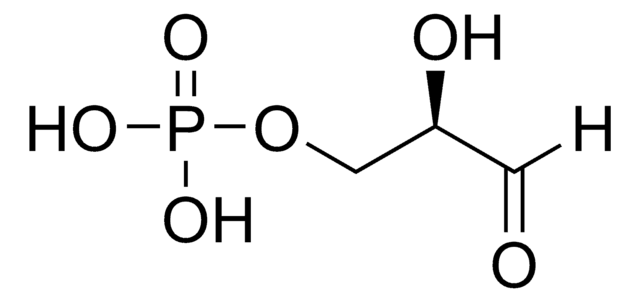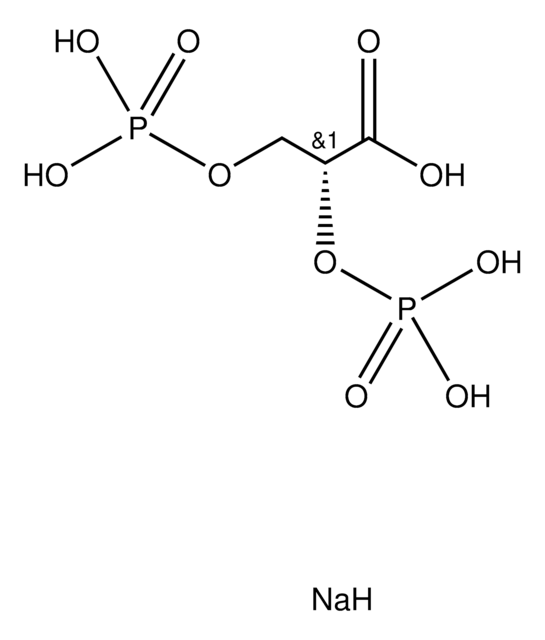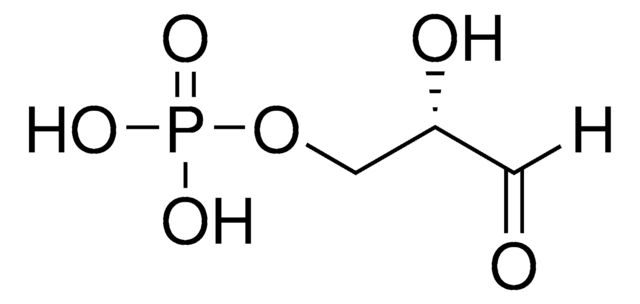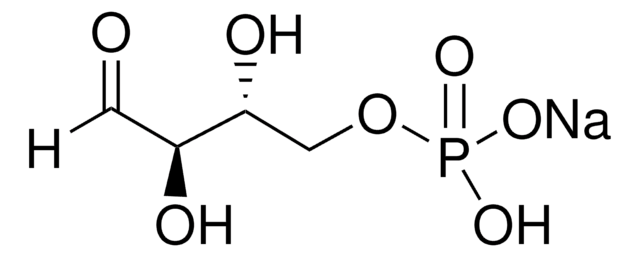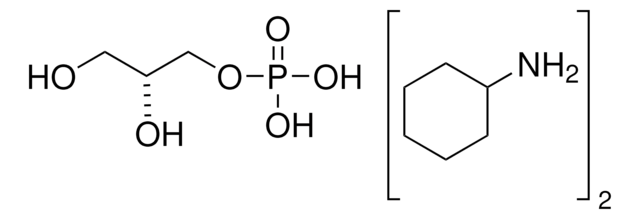G5251
DL-Glyceraldehyde 3-phosphate solution
45-55 mg/mL in H2O
Synonym(s):
(2-Hydroxy-3-oxopropoxy)phosphonic acid, 3-Phosphoglyceraldehyde
About This Item
Recommended Products
biological source
synthetic (organic)
Quality Level
form
liquid
concentration
45-55 mg/mL in H2O
color
colorless
cation traces
Ba: ≤100 μg/mL
shipped in
dry ice
storage temp.
−20°C
SMILES string
OC(COP(O)(O)=O)C=O
InChI
1S/C3H7O6P/c4-1-3(5)2-9-10(6,7)8/h1,3,5H,2H2,(H2,6,7,8)
InChI key
LXJXRIRHZLFYRP-UHFFFAOYSA-N
Application
Biochem/physiol Actions
Other Notes
Signal Word
Danger
Hazard Statements
Precautionary Statements
Hazard Classifications
Eye Dam. 1 - Skin Corr. 1B
Storage Class Code
8A - Combustible corrosive hazardous materials
WGK
WGK 3
Flash Point(F)
Not applicable
Flash Point(C)
Not applicable
Personal Protective Equipment
Certificates of Analysis (COA)
Search for Certificates of Analysis (COA) by entering the products Lot/Batch Number. Lot and Batch Numbers can be found on a product’s label following the words ‘Lot’ or ‘Batch’.
Already Own This Product?
Find documentation for the products that you have recently purchased in the Document Library.
Customers Also Viewed
Articles
The Pentose Phosphate Pathway operates in tissues that synthesize fatty acids and steroids. Learn more about the Pentose Phosphate Pathway, what it is and how it works.
Review the 10 steps of glycolysis in the Embden-Meyerhof-Parnas glycolytic pathway. Easily compare reaction stages and buy the enzymes for your life science research.
We presents an article about the Warburg effect, and how it is the enhanced conversion of glucose to lactate observed in tumor cells, even in the presence of normal levels of oxygen. Otto Heinrich Warburg demonstrated in 1924 that cancer cells show an increased dependence on glycolysis to meet their energy needs, regardless of whether they were well-oxygenated or not.
Our team of scientists has experience in all areas of research including Life Science, Material Science, Chemical Synthesis, Chromatography, Analytical and many others.
Contact Technical Service
